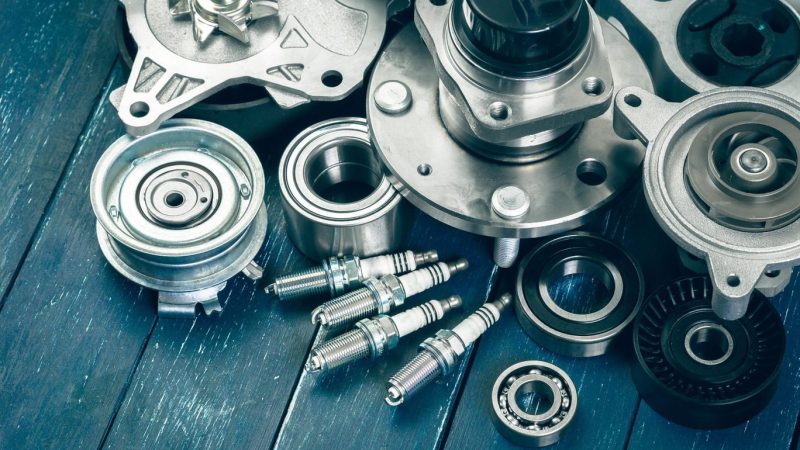Traction in tyres comes from their rubber surface’s contact with the road surface, as well as features like ribs, grooves, voids and sipes that channel water away and displace it to prevent aquaplaning.
On a tyre’s sidewall you will find two numbers separated by letters; these indicate its size (for instance: “195/55 R16”, with 55% height to width ratio for sidewall height.). Each number corresponds to one aspect ratio e.g. “195/55 R16” would indicate 55% height to width ratio in terms of aspect ratio ie 55 (195/55 R16 would have 55% sidewall height as measured against its section width).
Tread Pattern
Tread pattern plays an integral part in influencing car handling, acceleration and braking performance. This can be accomplished using an arrangement of ribs, grooves and voids on the tire surface.
Tyre engineers spend hours fine-tuning tread patterns for optimal performance in various driving environments. To do so, they must strike a delicate balance between goals that conflict – for instance, quickly draining water off wet surfaces through lateral and circumferential grooves in wet weather, while at the same time maintaining excellent grip in dry conditions.
The most frequently seen tyre tread pattern is symmetrical, where both left and right sides mirror one another. These versatile tires can be rotated in any direction for everyday use and offer maximum flexibility.
Tread Material
Tires contain over 200 raw materials. Most tires are constructed with natural and synthetic rubber polymers whose physical and chemical properties influence rolling resistance, tread wear, handling performance and traction characteristics.
A tyre’s skeleton is constructed using fabric cords that have been woven together and coated in rubber. Prior to being put through calendage, these fabric cords must first be pre-treated so they will adhere securely with the rubber compound compound when calendered.
Steel wire belts and beads are integrated into tire designs to improve wear, handling and stiffening of casing, while bead wire locks the tyre onto its wheel. Body plies – an inner layer composed of polyester rayon or nylon cords that helps hold inflation pressure inside a tire – also play an integral part.
Load Capacity
Load capacity of car tyres is listed as part of their code on the sidewall, usually as two or three digit numbers that appear after diameter measurement and before speed index.
When selecting replacement tyres, always choose ones with similar load ratings as your original set. Tyres with lower load ratings cannot support the weight of your vehicle and could result in blowout.
Tyres are composed of layers of rubber and cord material called plies, traditionally associated with greater carrying capacities. Modern construction methods allow for using less plies without diminishing tire strength.
Tread Design
The pattern of tread ribs and blocks has a direct bearing on your vehicle’s grip and handling. Tread voids known as sipes add biting edges that increase traction on varying road surfaces while circumferential and lateral grooves drain water away and help resist hydroplaning.
Standard symmetric tread patterns consist of equal ribs and tread blocks on both halves of your tire and can be fitted to any vehicle without issue. They offer fuel efficiency as well as great traction and stability for everyday driving; however they’re less suitable for wet roads or higher speeds driving conditions. Directional tires feature distinct patterns on either half and must be mounted with their arrow facing forward for optimal hydroplaning resistance and other performance-driving benefits.
Sidewall Design
Car tyre sidewalls contain more than just rubber; they contain chemicals such as anti-ozonants, antioxidants and paraffin waxes to protect from weathering and cracking.
Sidewalls of some tire manufacturers’ products are engineered to withstand curbs, potholes, and other forms of road hazards, while outside designers are sometimes hired by them for aesthetic design reasons.
Belt plies are multiple layers of strong steel cord woven together that sit beneath a tire’s tread area to add strength and stability, as well as improve traction, impact resistance and fuel economy.
Tread Depth
Tyre tread depth plays an essential part in handling, particularly on wet or snowy roads. Maintaining safe driving with lower tread depths increases the risk of aquaplaning.
Many tyres come equipped with tread wear indicators built into their grooves to indicate when they have reached or passed the minimum legal minimum of 1.6mm tread depth and require replacement.
Use of a tread depth gauge provides an efficient and quick method of inspecting tyre tread. These purpose-built devices feature a retractable rod with perpendicular feet, and an acrylic cylinder marked for measurement purposes.
Load Index
Load index is an industry standard number used to indicate how much weight your tyres can support when properly inflated, usually as two to three-digit number located between diameter reading and speed rating on its sidewalls.
Select tyres with load index ratings that meet the specifications set out by your car manufacturer. A lower load index could result in increased fuel consumption, poor vehicle handling and failure such as cracking or blowout; potentially invalidating car insurance policies as a result. It is best to always adhere to the load index ratings and recommended inflation pressures indicated in your vehicle’s manual when choosing new tyres.






